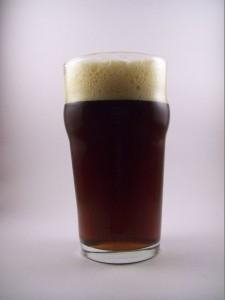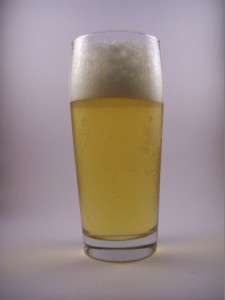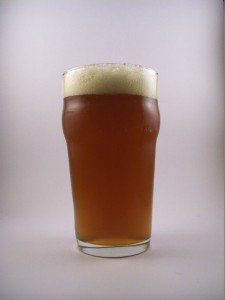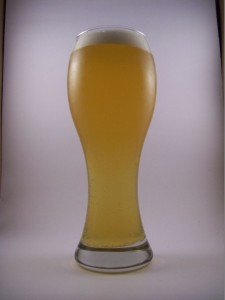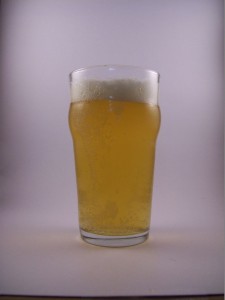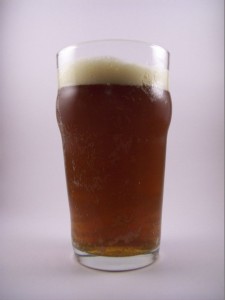Scotland, take two. This recipe is extremely similar to its lighter predecessor. The set of recipes suggested that the various strengths should only vary in base malt with the adjunct amounts consistent across all versions. We increased the Maris Otter to 4.75# and increased the East Kent Goldings to 0.75oz to maintain a similar fifteenish IBUs. The rest of the malts were identical, as was the mash/boil process and the geographically misplaced California ale yeast. OG came in above style at 1.046 but that’s exactly 10 points above the Light 60/-. The difference is in line with what it’s supposed to be indicating decent consistency if not necessarily accuracy. It finished at 1.010 which pushed the ABV a good bit beyond the correct range.
I wish I remembered the 60/- more clearly for comparison’s sake. This beer is quite malty up front but finishes dry. I don’t pick up any peat or smokiness; the first flavor is more of a not-quite-caramel. That fades rather quickly to more of a lingering earthiness; probably hops rather than a peat effect given the ingredients. The glass definitely smells far sweeter than it tastes. The body is decent for a lighter beer and there’s an unexpected complexity. I usually associate either hops or flavorful yeasts with more interesting beers, but a high percentage of specialty malts is apparently another possible route. I’m looking forward to trying the 80 now. Somewhere in this range a beer that’s not well represented in the American micro scene which could be appreciated by beer snobs without alienating more casual drinkers.
